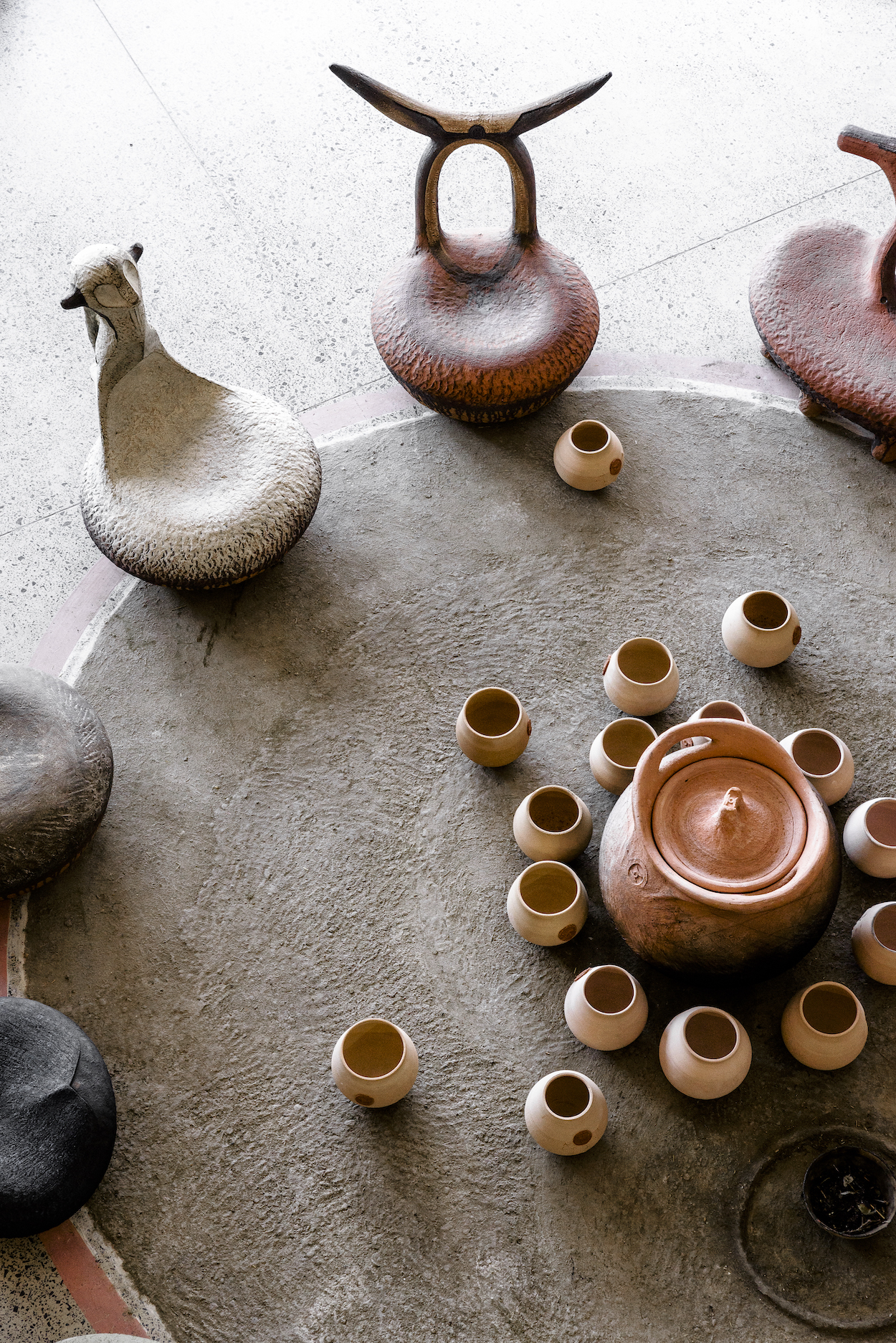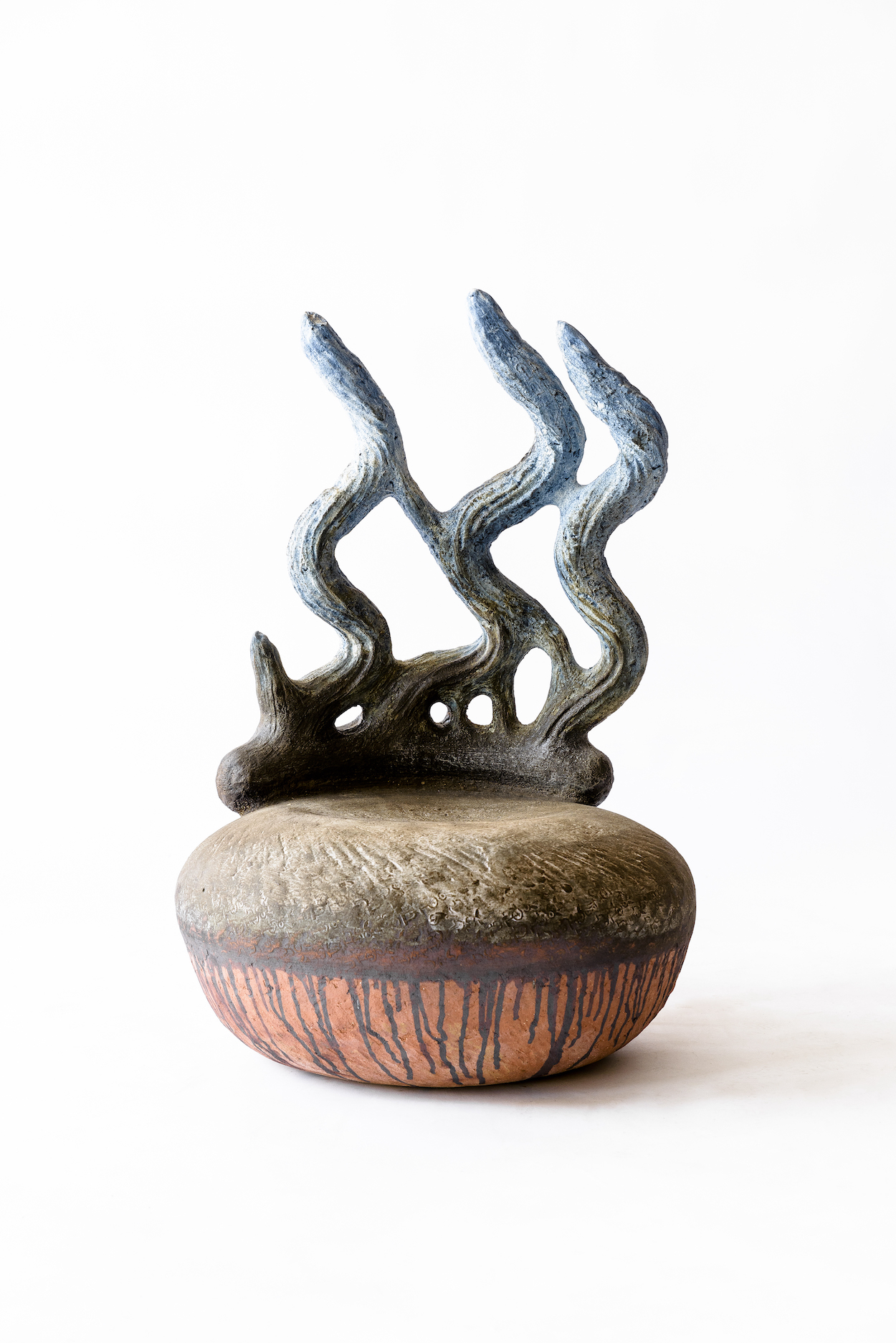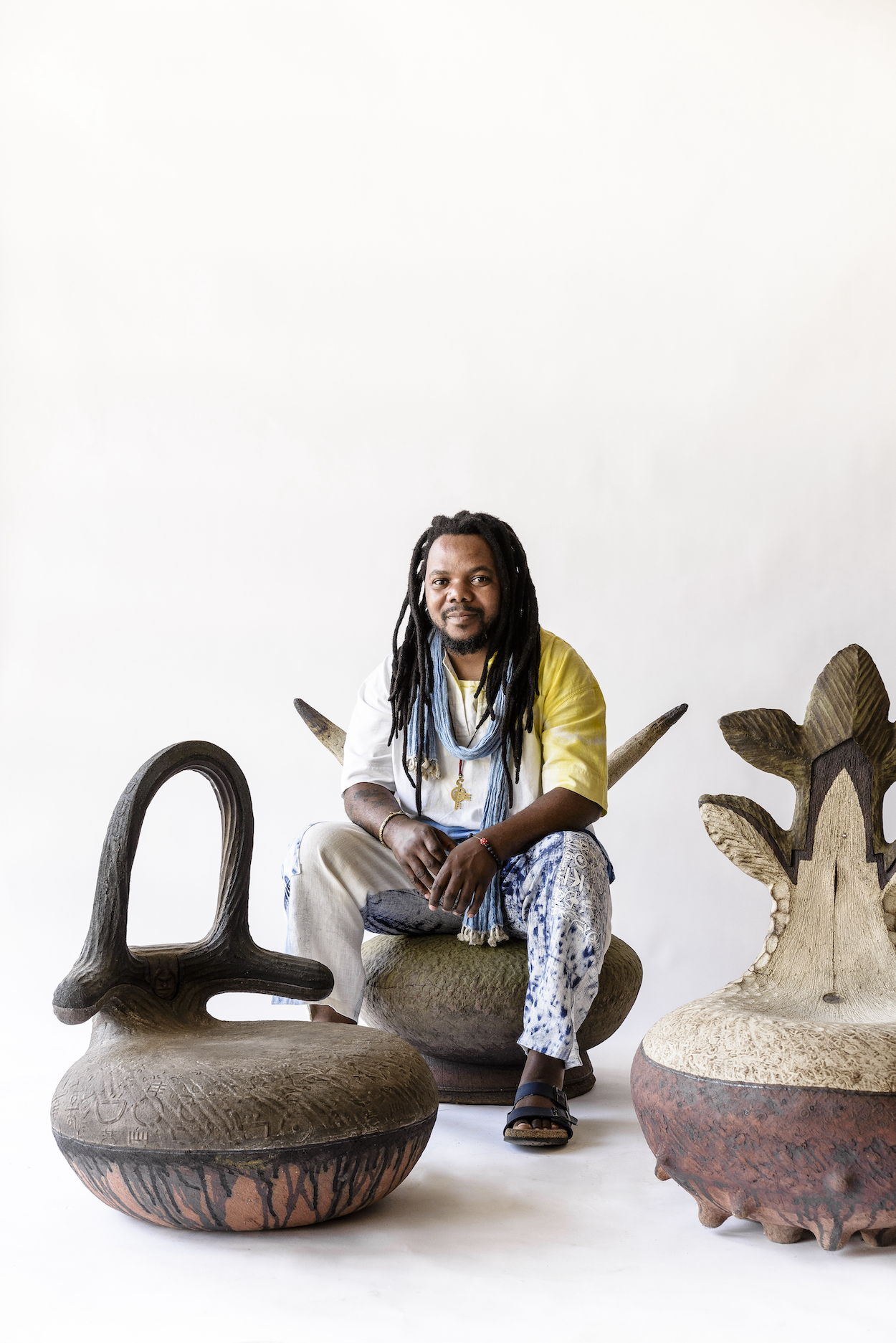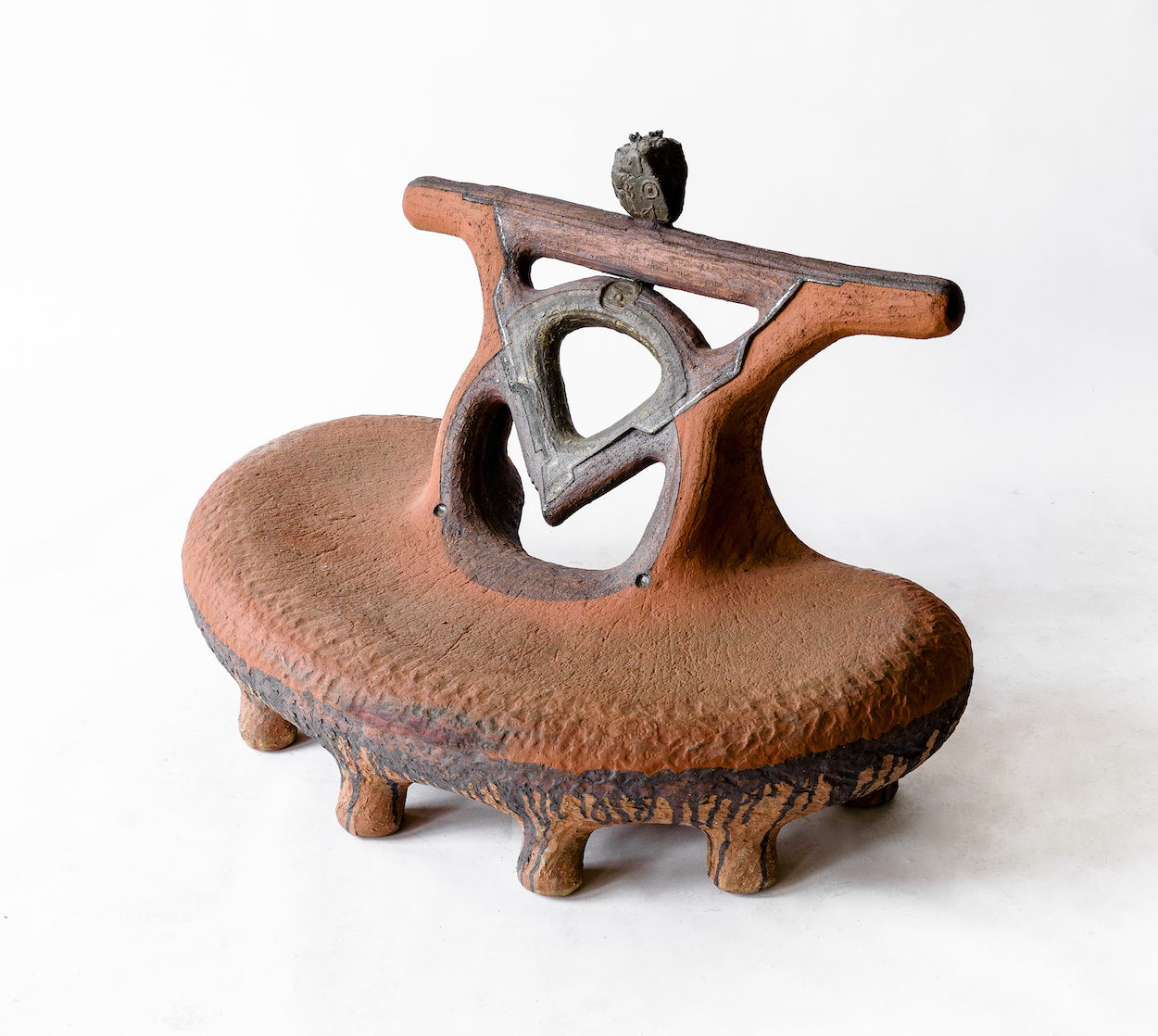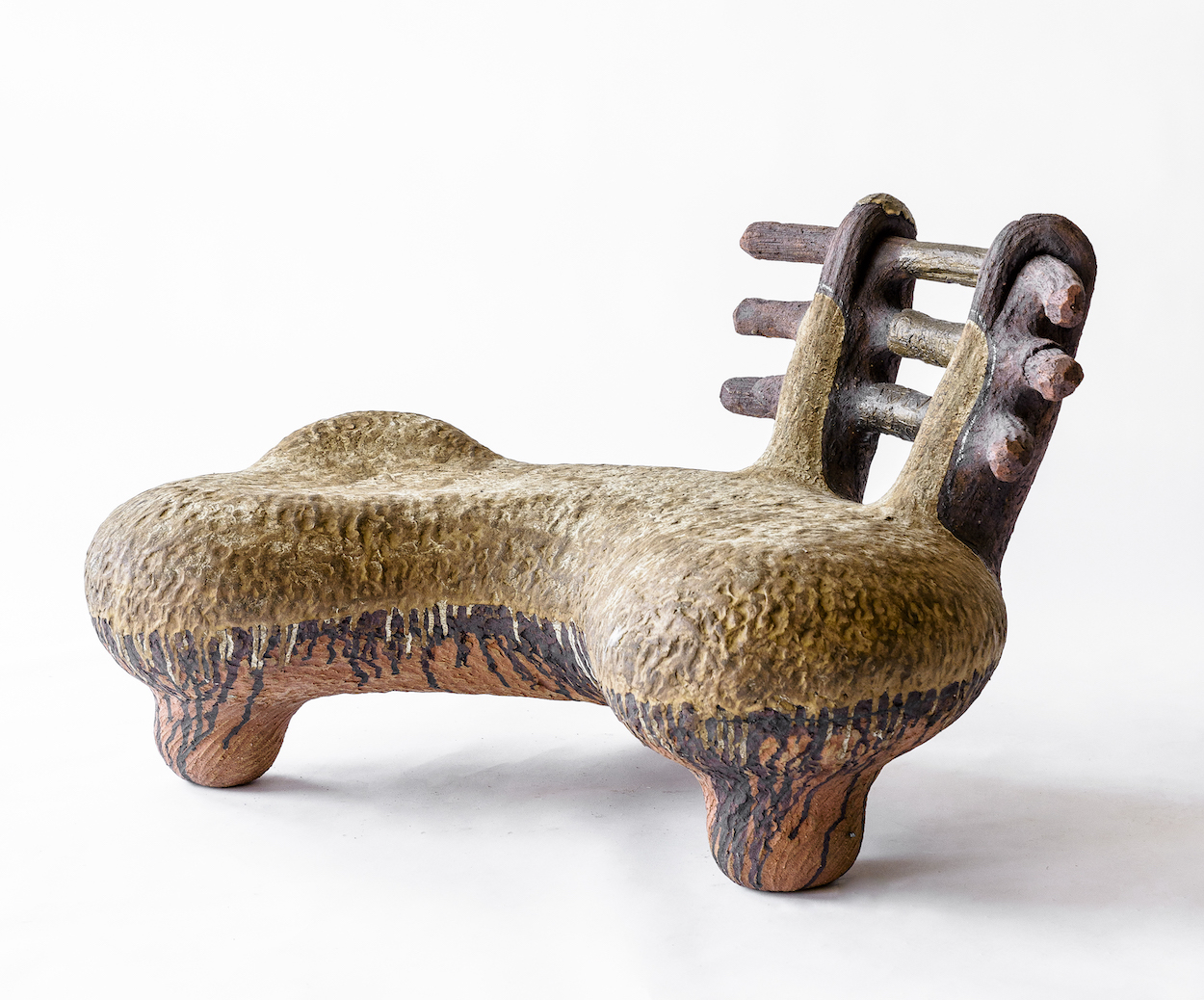Here, we ask designers to take a selfie and give us an inside look at their life.
Age: 42
Occupation: Designer.
Instagram: @andiledyalvane, @imisoceramics
Hometown: Ngobozana, Eastern Cape, South Africa.
Studio location: Cape Town, South Africa.
Describe what you make: I tell stories by using clay to make vessels and objects—forms sculpted from sketches to narrate and express my story. They may have functional attributes or not, depending on which parts of the story lead to the next offering. Clay is an ancient resource. It’s primary and throughout time is/has been archival of humanity’s evolution. So many stories have been told from shards of vessels. I send them along together through my work.
The most important thing you’ve designed to date: It’s never one object or vessel. My works always travel as characters moving together, broadening into a community of collections. All of them are important; they lead each other in various ways. My recent offering, Ithongo (“Ancestral Dreamscape” in Xhosa), is crucial in directing works I’m currently working on. And so it goes.
Describe the problem your work solves: Memory, or aiding in remembering what’s important to remember about one’s heritage. Preservation of African folklore and using stories as well as objects to attend to discussions about who we are, our experiences, and where we’re headed as humanity. Being able to transmute traumatic histories and platform resolves in this way, through my work is what leads it.
Describe the project you are working on now: For the 2021 Indian Ocean Craft Triennial’s theme of “Displacement and Repossession,” I’m looking at how we’ve changed regarding how we’re identified as persons in South Africa (as it is in various other African countries too). Magnifying our clan lineages and naming us for colonial recording purposes, census, and other as identity displacement.
My work “Izilo” looks firstly toward who I am as a clansman and explores through collaboration in clay to connect all familiar resonances in relation—symbols of clan, proverbs, mythologies, and this as social importance. It then extends toward global connections of the likes where similar stories, preservation, and sonic frequencies met in acknowledgement of our remembering, as it comes together in one space at the John Curtin Gallery in Perth.
A new or forthcoming project we should know about: Izilo Clan totems for the Indian Ocean Craft Triennial in collaboration with Zizipho Poswa, Fiona Gavino, Nkosenathi Koela, and Elder Barry Mcguire. Working with our studio IMISO Ceramics, I also produce various products that plug into projects and community building initiatives in collaboration with galleries, retailers, corporations, and agencies.
What you absolutely must have in your studio: Definitely music, burning Imphepho (sage-like herb), and cold beer in the fridge to enjoy after a good clay work session. Good energies are always great to have around. Overall the studio is energy-dependent.
What you do when you’re not working: Celebrating other entrepreneurs resilient in their ventures, visiting family and friends, sleeping, or traveling nationally with my family or group of good people.
Sources of creative envy: I wouldn’t use “envy” to describe my inspiration or sources. I enjoy learning about my family, ancestors, makers of utility goods for home, smiths, herdsmen, and so on. Spending time with different practitioners of sound, different kinds of artists, healers, and the likes. I’m inspired by elders such as Professor Pitika Ntuli, John Kani, Malidoma Patrice Some, Sanusi Vusamazulu Credo Mutwa—the resilience within their lives, partners, and works. Dame Magdalene Odundo. Spiritual elders equally inspire me. Nkosenathi Koela, Sisonke Khanyisa Papu (of Isipili Network), Vusumzi Ngxande of the Podcast “The Journey Kwantu,” and many more.
The distraction you want to eliminate: Establishments propagating the illusion that all things are finite.
Concrete or marble? Marble (truth: clay).
High-rise or townhouse? Townhouse (truth: adobe).
Remember or forget? Remember (truth: degrees of both).
Aliens or ghosts? Ghosts (truth: both).
Dark or light? Light (truth: degrees of both).
“Andile Dyalvane: iThongo will display at Friedman Benda (515 West 26th St, New York) until May 22.”

